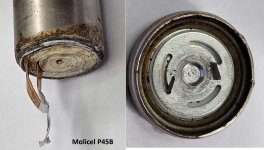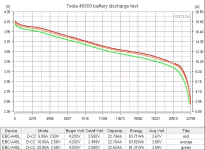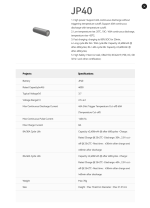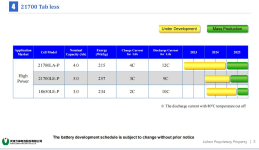Pajda
10 kW
The EVE 4680 sample cell thing has been postponed indefinitely, but recently my colleague tuned up Micro-TIG and somehow the Cu busbar on aluminium is holding up. Cu with Al is not the best combination, but it will do for tests. The nominal capacity of the EVE 4680 sample is only 22Ah out of 26Ah declared, which cannot be seen as anything other than disappointing. Let's see how they cycle. A competitor in the EVE 4695 format has already completed 1000 cycle and hope I will update the table and graph soon








